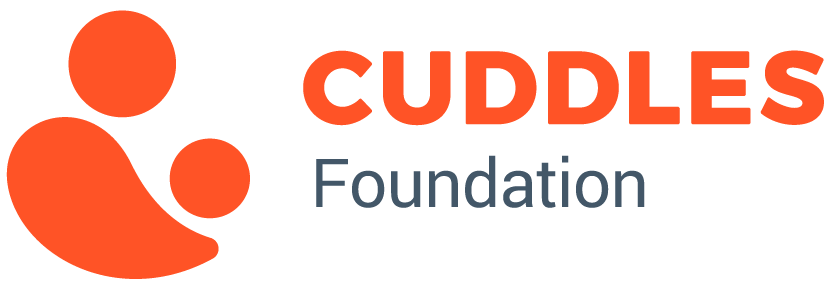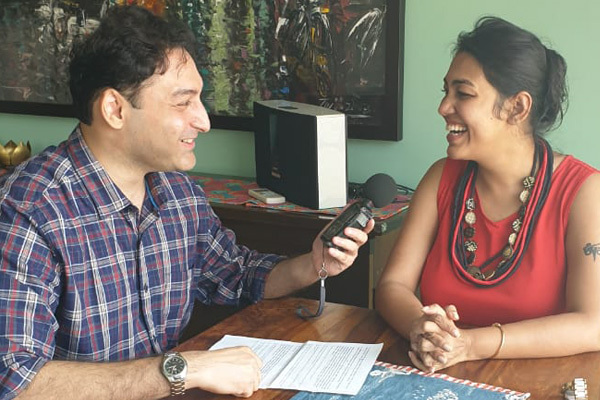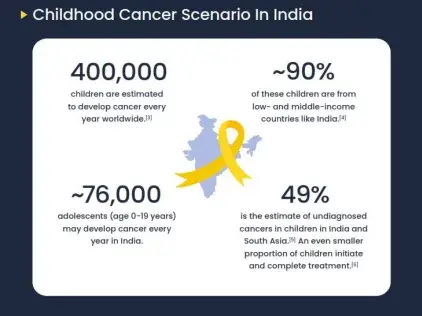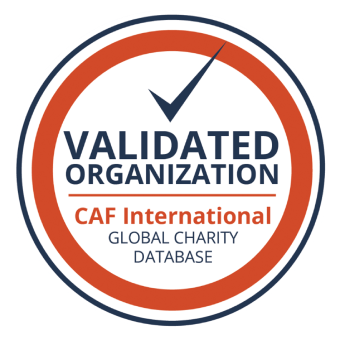Q1. How did this amazing journey begin? What sparked the idea for Cuddles Foundation?
Ans : Thanks for asking, it is a very interesting story. I would say that Cuddles Foundation began around 8 years ago when I delivered my first child; her name is Ahaana. At that time I was on sabbatical; on my maternity leave. My husband and I used to support 3 children with their treatment at the Tata Memorial Hospital. One day, I decided to visit the hospital and have a look at the kids who we were supporting. This was the day that was truly life-changing for me. I had never seen so many children who were so sick, little ones with balding heads with IVs, running around. I remember, as I exited the hospital there was this one particular child who was wearing a black thread around his leg, the ‘Nazar thread’ or the ‘evil eye thread’, the same one my daughter used to wear. I think she was wearing it on her right leg and Ahaana used to wear it on her right leg. And at this moment it struck me! It was mere luck that I was standing outside the hospital as a donor, while that mother was sitting inside with her child on her lap. I decided to do something about this. I made up my mind and decided to meet the head of social services. The lovely lady, Shalini Jathia from Tata Memorial Hospital in Bombay, said this, ‘You know Purnota we get enough help with treatment. Lots of donors like you come in, but we don’t get any help with nutrition’. That part didn’t make any sense, because as a culture we feed right? All our happiness, all our sadness, all our celebrations – everything is around food. When I went back and did my research, I realized she was right. And that’s where Cuddles was born. I started donating towards nutrition, and every time they had a requirement, they would call me, which exceeded what my husband and I could afford on our own, so we started sharing this with our friends. Eventually, this one-person initiative grew into something bigger as more supporters, donors, and team members started joining. It had become a movement. This is the story of Cuddles.
Q2. What are some of the misconceptions people have about children affected with cancer? What are some of the challenges that you faced while starting out? I am sure that there were many challenges.
Do not be surprised if I tell you that even today cancer is considered to be incurable, and that’s the biggest challenge. When parents find out their children have cancer, they think they have lost it all. The second misconception is that there is a lot of taboo around cancer because a lot of people think that it’s a communicable disease. If I touch someone who has cancer, I might get cancer too. So a heartbreaking fact is that every year about 60,000 children are estimated to get cancer and only about 10,000 children are into hospitals seeking treatment. The biggest issue about childhood cancer is that the children don’t reach the hospitals. When I started, the biggest misconception that I had to fight was that the donors were quite happy to support a child for treatment but when I would say it’s about nutrition, they would all say the same thing – why not support them for treatment? So at this point, I would tell all the listeners that treatment is step two. Step one is Nutrition. Imagine that you are sick and the doctor asks you to take a pill. If you are not able to take the pill, you might have all the money in your bank to buy that pill, but the pill has no use. Similarly, when children have cancer, if their bodies are not able to handle chemotherapy, all the money that’s kept in their bank account for treatment is for nothing. So, nutrition is step one and chemo is step two.
Q3. Nutrition is very important in the fight against cancer? Could you highlight a little bit about that?
Yes, let me give you very quick statistics, so about 70 to 80% of children, which is 8 out of 10 children walking into our government hospitals are malnourished. Children usually suffer from leukemia. The treatment for it, as all of us know, is chemotherapy. Now, chemotherapy doses are administered based on your body weight. It’s like antibiotics – if you are X kilos then you have to take Y mg of antibiotics. If a child is malnourished you are not able to give the child the adequate amount of chemotherapy. For example, if a child is 8-years old and needs 10 units of chemotherapy and the child is malnourished, you can’t give him 10 units. So the doctor faces this difficult choice:
Choice number one is to give the child 10 units even though the child is malnourished. This can result in very bad side-effects. The child can even lose his life.
Choice number two is that the doctors will have to give them less amount of chemotherapy, which is then not very effective.
To simplify it in one sentence, to take chemotherapy you have to have an ideal weight which can only happen if you take enough nutrition.
Q4. The foundation works in 30 hospitals across 19 cities, across India and provides holistic nutrition support to over 20,000 children every year. How do you plan out the nutrition and diet requirements in each hospital? Is it different for different types of cancer?
Yes, so earlier on when we started nutrition, we found that there was no ‘one silver bullet’. There is no ‘one solution’ that would work for every child, because you know we are all different, all our bodies are different. This is how we work – we provide nutritionists to every single hospital. Every child who walks through the door of, let’s say for example the Tata Memorial Hospital, will first visit the doctor and then go see the nutritionist immediately. The nutritionist writes out the nutrition prescription which is specific to every single child. We write specific scientific nutritional prescriptions. Our prescriptions are also dependent on which region the child belongs to. The breakfast that we recommend in the west is quite different from the breakfast that we recommend in the north or south. So we take into consideration not only the child’s type of cancer and grade of malnutrition but also where the child comes from. This allows us to write nutrition prescriptions that are specific to the child. Yes, the nutrition is specific, to the child and specific to the region.
Q5. In a first-of-a-kind initiative, you mentioned that the foundation actually worked with the Tata Memorial Hospital and Tata Trust and it was also recognized by UNICEF, for a week-long training program,or 30 nutritionists across India, to handle the requirement for children with cancer. Tell us about this is a first of its kind to initiative in the entire country.
Yes, when we started off there was no cause called ‘pediatric oncology nutrition’, in simplified words, nutrition for children with cancer. A brilliant doctor called Dr. Brijesh Arora in the Tata Memorial Hospital actually developed the nutrition protocol and handed over it to us. Cuddles took it from there and then we built the nutrition curriculum over the years. Every single year, our nutritionists from all over the country assemble together for a week-long nutrition training program where we teach them how to take care of the children who are afflicted with cancer and are malnourished. Not only that, but we are also on-par with all the technology and the research happening around the world. We want to make sure that we have the most skilled and brightest nutritionists in the country because we are working with some of the highest risk-prone kids. So, our nutritionists are also trained in advanced things like how you take care of the nutrition when a child undergoes a bone marrow transplant. What happens if a child has severe reactions? How do we deal with different kinds of reactions? How to deal with a child’s nutrition in the ICU? We conduct intensive training for our nutritionists at Cuddles Foundation. Also, we are seriously considering opening up this nutrition training to anyone who wants to come to learn so that people can replicate what we are doing and reach out to more and more kids.
Q6. The foundation has changed the lives of thousands and thousands of families. Are there any memorable stories that you would like to share of the children and the families that you interacted with during your time with Cuddles?
There are thousands of stories because over these years I have visited all our hospitals, lots and lots of kids and, every story is either heartbreaking or, depending on the outcome, heartwarming. There is this one child I want to speak about, who was my first. You know every first is special. There was this child who we had found at the galleries of a hospital. He was abandoned by his parents. We didn’t know why he was abandoned but most often the reason is that parents abandon their sick children because they have to look after the child and for that, they have to start working again. So they leave the child at the corridors hoping that a kind doctor, a kind nurse or a kind nutritionist that they have met, takes care of the child.
But Nandu was a special 10-year-old, he wasn’t like a regular 10-year-old child. So he would go to a factory close by – the hospital was in Parel in Bombay – he would go to a factory close by and earn a living. He would earn 30 – 40 rupees a day and he would use that money for food. He would stay in hospital corridors and seek treatment. So once every 20 – 21 days he would take chemotherapy which is amazing for a child who is just 10 years old. And then lucky for us, we started working in that hospital and we adopted Nandu. We started taking care of Nandu’s nutrition. These were some of the beautiful results that we started seeing – Nandu didn’t not have to work in the factories anymore, his health started improving because he was getting rest and a relatively cleaner environment, he started going to a small school, which was running in the hospital and he resumed his studies; as he is a bright boy, you can tell. He started responding much much better to his chemotherapy because he was doing well.
Today he is a 15-year-old, his hair is back, and you know one day, God willing, we will have him as a part of our team, giving back and reaching out to kids like him who are abandoned. So that is a special story.
Q7. Thank you for sharing that story with us. What goals have you set for Cuddles in the near future.
In the near future, we would absolutely love to reach out to 100% of all children undergoing cancer treatment in the country. Now, whether we do it ourselves by tying up with hospitals or whether we do it by tying up with other foundations who work in those hospitals, or as I just told you, training other people, giving them the tools – the tool kits that we have created to conduct this work in other hospitals, we are open to all these possibilities. But in the next 5 years, the goal that we have set for ourselves is 100% coverage across the country.
Q8. Now how can those listening in public, support the foundation even if they want to? Can people volunteer their time, help with donations towards food and other things; towards your amazing cause?
Yes, thank you for asking. Actually, everybody can help, but I would like to tell you at this point of time no amount of help is too little. One banana costs us 2 rupees, one egg costs us 6 rupees, so even a 10 rupees donation really helps. So people can go on the website and type out www.cuddlesfoundation.org/donate. Chances are most likely we are in the city you are listening in. Please visit the hospital, see the work that we do, they can volunteer their time for the parent support group meetings that we have once in a month, and of course, professionals can give their expertise, their time to talk about the cause, then take this cause ahead the way you reached out to me saying that ‘why can’t we take it to more people?’. Because the biggest challenge today is that very few people know the importance of nutrition in the cure of cancer. Not only pediatric but during the treatment of every kind of cancer, nutrition is critical. So everybody can join the cause, either through their gift of influence, the gift of their voice or the gift of their abundance or wealth.
Q9. As you mentioned earlier that childhood cancer can be curable.
Yes I mean, I want to share these statistics. In the west, they are successfully treating upwards of 90% of all children who are under pediatric oncology care. So cancer has a cure rate as any of your cases of flu or colds. It’s just that it should be detected on time, follow-ups have to be done. So please if you are seeing persisting symptoms in your child or anybody you know, you must take care of the follow up and the investigation, as you know childhood cancer is very curable.
Q10. What more do you feel needs to be done in the country to combat cancer?
I am very happy to tell you especially in the context of what is happening around us right now. The government is doing a great job of providing care, funding around cancer. There are national schemes, there are state-level schemes, there are district-level schemes to support kids with cancer; even adults with cancer. The government hospitals are doing a great job. The load of patients that they see; you need to walk around to see how the doctors are working tirelessly. So that is the one good news I want to share. Coming to the point of what else can be done in the country, I think that there is a deep need for professionals to get into charity, to get into philanthropy, to solve for the biggest issues that are staring at our face. In fact, one of the reasons Cuddles has done so well, say in the last 6 years, is a very strong and professional team of people that went to the best colleges, best schools, had a great career and now have got together to solve this problem, so that is what I wanted to say.





